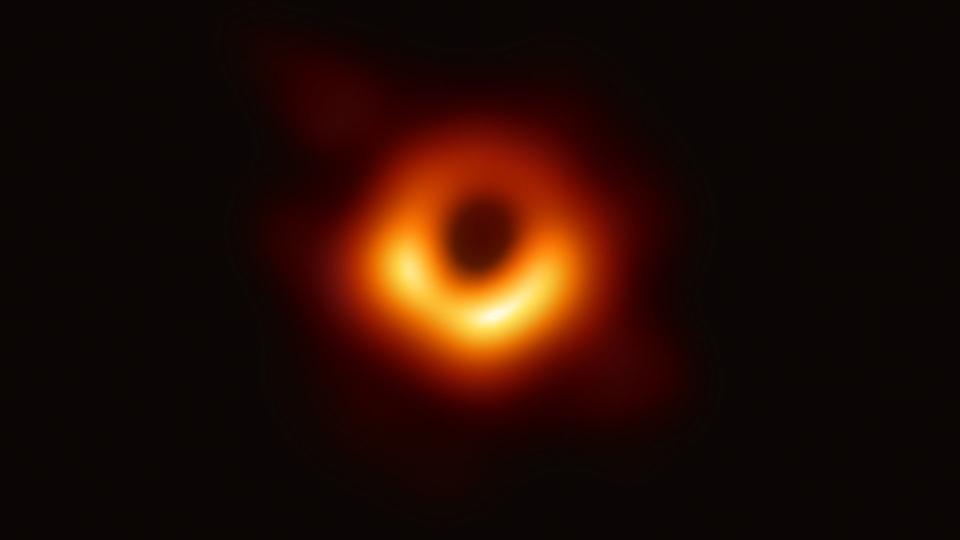How the first picture of a black hole captures a big 2019 mood

For decades, pictures from space have forced humanity to reckon with our own cosmically small insignificance. But they have nothing on today's monumental first in space photography.
The Event Horizon Telescope captured a phenomenon so mysterious, so literally awesome that, for many years, scientists believed it would be impossible to depict: a black hole. EHT's international group of astronomers revealed "a bright ring formed as light bends in the intense gravity around a black hole that is 6.5 billion times more massive than the Sun."
Our collective response to this historic discovery? Basically: "LOL, ¯\_(ツ)_/¯."
she’s a virgo #EHTBlackHole pic.twitter.com/fL2LN3KxK1
— Daniel Howell (@danielhowell) April 10, 2019
I'm hardly immune. When I woke up to meme after meme of what I could only assume was Sauron's butthole, I too hopped on the #bigmood meme train. After all the anticipation, after science fiction and CGI artists did their best to imagine how this reality-shattering celestial occurrence might look, it turns out to be just, like, a supernova donut.
SEE ALSO: Here's the stunning first recorded image of a massive black hole
It wasn't always like this, though. Before we became numb to nihilistic terror, we used to looked up at space and see a reflection of our own trivial, fleeting lives.
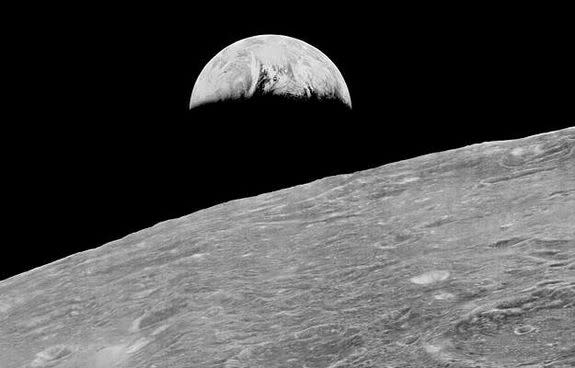
Image: NASA/LOIRP
In 1966, humanity was confronted with the first ever picture of Earth from the moon. We finally saw our planet for what it is: a lonely celestial object surrounded by empty space. This place that contained everything we knew and loved, being half-consumed by an imposing darkness that seemed to threaten to swallow us whole.
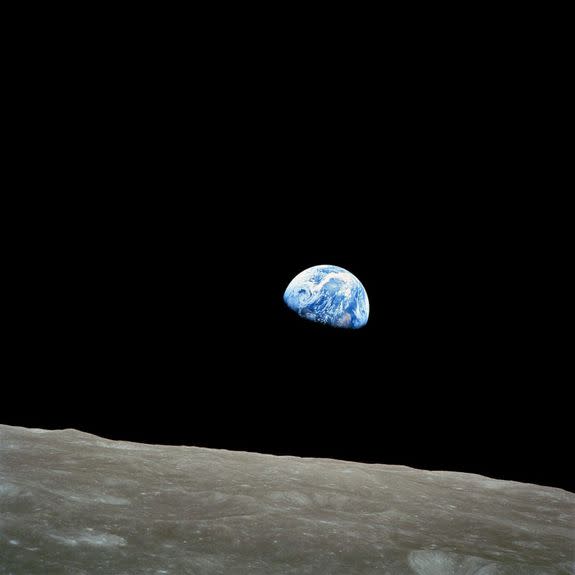
Image: nasa
In 1972 we got the Blue Marble, a vivid first image of the earth in its entirety, taken by the Apollo 17 crew. We marveled then too, filled with a sense of the sublime, stunned by a planet both impossibly magnificent and unimaginably vulnerable.
"Earth is revealed as both a vast planet home to billions of creatures and a beautiful orb capable of fitting into the pocket of the universe," NASA later summarized.
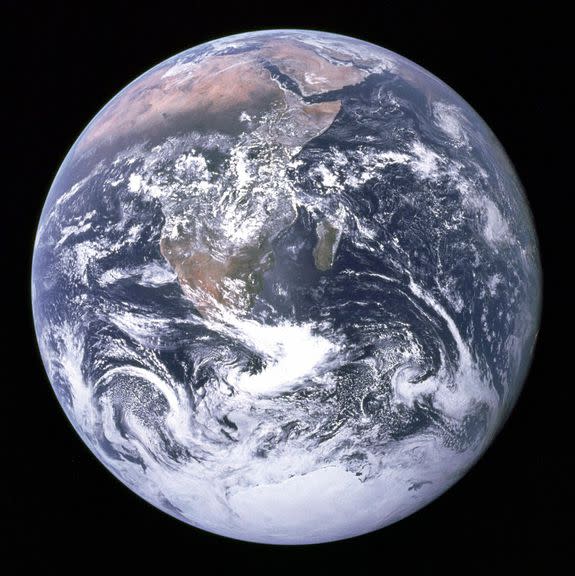
Image: nasa
Then on Valentine's Day 1990, Voyager 1 gave us our biggest dose of cosmic humility to date. As it floated away from our solar system, the late great Carl Sagan requested the Voyager's camera look back at us one last time, to take a snapshot of Earth from 3.7 billion miles away.
The Pale Blue Dot we'd marveled at only a couple decades earlier was now a tenth of a pixel of barely distinguishable light in an overwhelming nothingness.
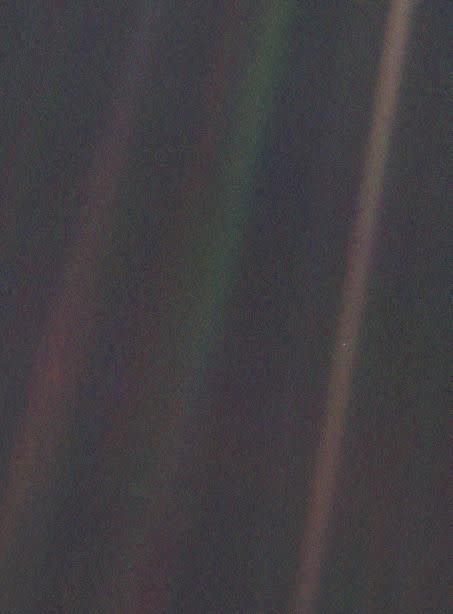
Image: NASA/JPL
Now, in 2019, many of us already feel like we live in a metaphorical black hole, stuck inside an inescapable event horizon where the rules of reality are shredded and distorted beyond comprehension.
By comparison, the first ever image of an actual black hole just feels kind of, well, basic.
Gone are the days when historic space photography inspired a shocking jolt of realization, that out-of-body experience of seeing ourselves — our whole, collective, human selves — from a new perspective. In 2019, we experience that multiple times a day.
Tellingly, the other space story to go viral this year was also one of decay and doom. In February, Twitter erupted in an outpouring of mourning and #same vibes for the Mars Opportunity Rover's alleged final words: "My battery is low and it is getting dark."
Never mind that these were not actually its final words. The social media hive mind had found its relatable space hero in the little Mars rover that could, until it couldn't anymore. Space robots: they're just like us!
I’m sorry, I just found out the last message sent by the Mars rover was “my battery is low and it is getting dark,” so now I have to spend the rest of the day watching WALL-E and sobbing.
— Louis Peitzman (@LouisPeitzman) February 13, 2019
Why does this feel so sad and romantic https://t.co/OInKYGFR9d
— Chelsea Peretti (@chelseaperetti) February 13, 2019
The truth is that in the current cultural climate, every moment already feels like a confrontation with a meaningless vacuum, a perpetual reflection of our powerlessness and insignificance. Our perception of reality is torn down moment to moment.
I mean pic.twitter.com/FAYVSbaUGV
— Chuck Wendig (@ChuckWendig) April 10, 2019
Perhaps, on some level, the black hole feels a little disappointing because we were hoping it'd give us even a single second of respite from the black hole that is our collective soul in 2019. Maybe on some subconscious level we hoped this celestial phenomenon would finish the job that the 1966 Earthrise picture promised: swallowing us whole.
Either way, it seems that when we look up at the void these days, we don't see anything alien. We only see ourselves.
WATCH: First image of a black hole is captured by astronomers
